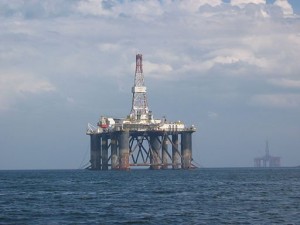 Many people think 3D technologies are just used for fun but that couldn’t be farther from the truth. In fact, more and more people are using these technologies for vital purposes that could actually save lives. In fact, a new study is being conducted to measure the shape, size, and weight of offshore oil rig workers to ensure safety equipment, gear, clothing, and space on survival vessels can accommodate everyone on board.
Many people think 3D technologies are just used for fun but that couldn’t be farther from the truth. In fact, more and more people are using these technologies for vital purposes that could actually save lives. In fact, a new study is being conducted to measure the shape, size, and weight of offshore oil rig workers to ensure safety equipment, gear, clothing, and space on survival vessels can accommodate everyone on board.
The study is being conduced at Robert Gordon University’s Institute of Health and Welfare Research with people from Oil and Gas UK in Aberdeen. It’s using 3D scanning to reevaluate workers on oil rigs and implement new safety standards. It will look at 600 different workers and get sample measurements from each to develop new safety equipment and ensure everything currently in place will accommodate everybody. If it’s found emergency procedures cannot accommodate the size and weight of everyone, new procedures and equipment will be put in place to ensure safety.
As you can imagine, space and weight concerns are a very big deal for life rafts and emergency helicopters. It’s vital that there is enough room for everyone. Otherwise, there could be a very real disaster in an emergency situation.
Leading this 3D scanning project are Dr. Graham Furnace, a Medical Advisor for Oil & Gas UK and Dr. Arthur Stewart, deputy director of Robert Gordon University’s Centre for Obesity Research and Epidemiology or CORE. The project began in 2011 and has been developing a team to carry it out ever since. Other people involved in the project are Dr. Eyad Elyan and Professor Patrik Holt from RGU’s Institute for Innovation, Design, and Sustainability Research and Robert Paterson, director of the Health, Safety and Employment Issues from Oil and Gas UK.
Since the last body measurements of oil rig workers were taken in the 1980s, this study is vital to the continued safety of all offshore workers. The average size of workers has grown 19% since then, so there are many changes that need to be made.
Most people think of 3D scanning when talking about reverse engineering or modeling. However, that’s not all it can be used for. Obviously, measuring workers will involve modeling but it’s also directly related to promoting safety. That’s why this is so important for oil rig workers and the entire oil and gas industry as a whole. Technology is paving the way for some big changes and I for one am excited to see where it takes us.
